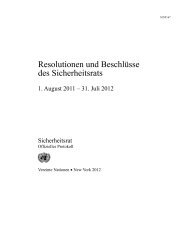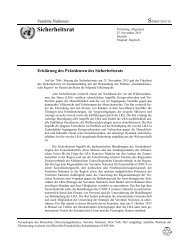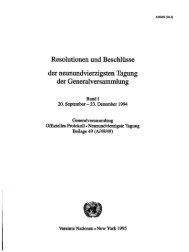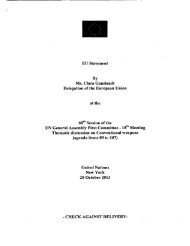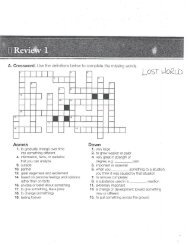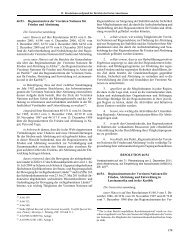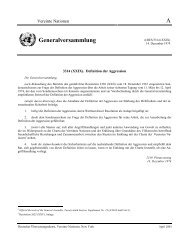IATG 01.80
IATG 01.80
IATG 01.80
Create successful ePaper yourself
Turn your PDF publications into a flip-book with our unique Google optimized e-Paper software.
6.1.3. Air density behind the shock front<br />
Dsf = (7 + (6 Ps /7P0)/( 7 + Ps/7P0)) . Dair<br />
6.1.4. Dynamic pressure<br />
Table 5: Air density behind the shock front<br />
4<br />
Dsf = Air Density behind Shock Front (kg/m 3 )<br />
Ps = Peak Side-On Pressure (kPa)<br />
P0 = Ambient Pressure (kPa)<br />
Dair = Air Density<br />
<strong>IATG</strong> <strong>01.80</strong>:2011[E]<br />
1st Edition (2011-10-01)<br />
The dynamic pressure during blast loading of a structure is a function of the pressure over time, as<br />
opposed to quasi-static blast loading at a given moment of time:<br />
2<br />
Pd = 5Ps + 2(Ps + 7P0)<br />
6.1.5. Reflected pressure 10<br />
Pr = 2Ps . ((7P0 + 4Ps)/(7P0 = Ps))<br />
Table 6: Dynamic pressure<br />
Table 7: Reflected pressure<br />
Pd = Peak Dynamic Pressure (kPa)<br />
Ps = Peak Side-On Pressure (kPa)<br />
P0 = Ambient Pressure (kPa)<br />
Pr = Peak Reflected Pressure (kPa)<br />
P0 = Ambient Pressure (kPa)<br />
Ps = Peak Side-On Pressure (kPa)<br />
Further details on the practical use of these formulae are contained within <strong>IATG</strong> 02.20 Quantity and<br />
separation distances or the Explosion Consequence Analysis concept in <strong>IATG</strong> 02.10 Introduction to<br />
risk management processes and the accompanying <strong>IATG</strong> software.<br />
6.2 Kingery and Bulmash<br />
Equations to estimate blast over-pressure at range have been developed by Charles Kingery and<br />
Gerald Bulmash. These equations are widely accepted as engineering predictions for determining<br />
free-field pressures and loads on structures and form the basis of the US Conventional Weapons<br />
Effects Programme (CONWEP) software. Their report 11 contains a compilation of data from<br />
explosive tests using charge weights from less than 1kg to over 400,000kg. The authors used<br />
curve-fitting techniques to represent the data with high-order polynomial equations, which are<br />
included in the accompanying software to the <strong>IATG</strong> for ease of application.<br />
The equations are summarised in Tables 8 – 13 for information, where functions to represent the<br />
air blast parameters versus distance in metres for a 1kg TNT spherical free-air burst are shown for:<br />
1) Incident Pressure; 2) Incident Impulse; 3) Reflected Pressure; and 4) Reflected Impulse.<br />
The numerical values for the constants ‘C’ and ‘K’ are those for a 1kg TNT equivalent charge.<br />
Predictions for other explosives will require that the TNT equivalence be first estimated (Clause<br />
7.2).<br />
10 Normally reflected pressure.<br />
11 Charles N Kingery and Gerald Bulmash. Airblast Parameters from TNT Spherical Air Burst and Hemispherical Surface<br />
Burst, US Technical Report ARBRL-TR-02555. Ballistics Research Laboratory, Aberdeen Proving Ground, Maryland, USA.<br />
April 1984.



